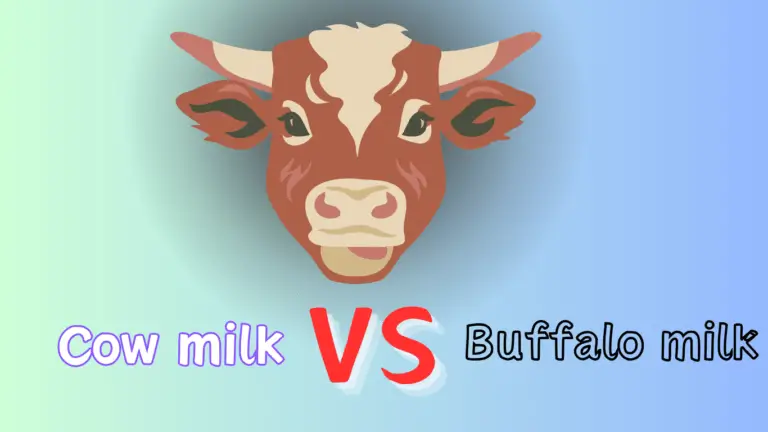Milk is a staple in many households, and its consumption is an integral part of a balanced diet. While cow milk is the most widely consumed type of milk, buffalo milk also holds nutritional value. In this article, we will explore and compare the differences between cow milk and buffalo milk, highlighting their nutritional content and potential health benefits.
| Aspect | Cow Milk | Buffalo Milk |
|---|---|---|
| Fat Content | Typically lower fat content (3–4%) | Higher fat content (7-8%) |
| Protein Content | Higher protein content (3–4%) | Lower protein content (4-5%) |
| Calcium Levels | Rich in calcium | Higher calcium content |
| Cholesterol | Lower cholesterol content | Higher cholesterol content |
| Calorie Content | Lower calorie content | Higher calorie content |
| Vitamin A | Lower vitamin A content | Higher vitamin A content |
| Vitamin B12 | A good source of vitamin B12 | Higher vitamin B12 content |
| Iron Content | Lower iron content | Higher iron content |
| Water Content | Higher water content | Lower water content |
| Digestibility | Easier to digest | May be slightly harder to digest |
1. Fat Content
- Cow milk generally contains a lower fat content, typically ranging between 3-4%.
- Buffalo milk, on the other hand, has a higher fat content, often ranging from 7-8%. This higher fat content contributes to its creamy texture and richness.
2. Protein Content
- Cow milk is known for its higher protein content, ranging from 3-4%.
- Buffalo milk, while still a good source of protein, tends to have a slightly lower protein content, typically ranging from 4-5%.
3. Calcium Level
- Both cow and buffalo milk are rich in calcium, a crucial mineral for bone health.
- Buffalo milk, however, tends to have higher calcium levels, making it an excellent choice for individuals looking to boost their calcium intake.
4. Cholesterol
- Cow milk generally contains lower cholesterol levels compared to buffalo milk.
- Buffalo milk has a higher cholesterol content, which may be a consideration for individuals watching their cholesterol intake.
5. Calorie Content
- Cow milk is generally lower in calories compared to buffalo milk.
- Due to its higher fat content, buffalo milk has a higher calorie count. Individuals on calorie-restricted diets may need to be mindful of their portion sizes.
6. Vitamin A
- Cow milk contains vitamin A, but the levels are typically lower.
- Buffalo milk is richer in vitamin A, which plays a vital role in maintaining healthy skin, vision, and immune function.
7. Vitamin B12
- Cow milk is a good source of vitamin B12, which is essential for nerve function and the production of red blood cells.
- Buffalo milk tends to have higher levels of vitamin B12, making it beneficial for individuals with dietary restrictions or deficiencies.
8. Iron Content
- Cow milk has a lower iron content.
- Buffalo milk is known to contain higher levels of iron, contributing to better iron intake for those who need it.
9. Water Content
- Cow milk has a higher water content, contributing to its lighter texture.
- Buffalo milk has a lower water content, which contributes to its thicker and creamier consistency.
10. Digestibility
- Cow milk is generally easier to digest for most individuals.
- Some people may find buffalo milk slightly harder to digest due to its higher fat and protein content.
Conclusion
Both cow milk and buffalo milk have their own unique nutritional profiles, and the choice between the two depends on individual preferences, dietary needs, and health considerations. Understanding the differences between these two types of milk can help consumers make informed decisions about which milk suits their lifestyle and nutritional requirements.
